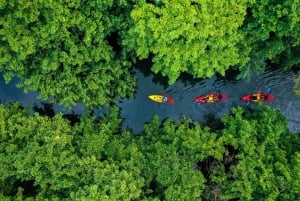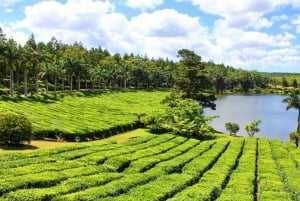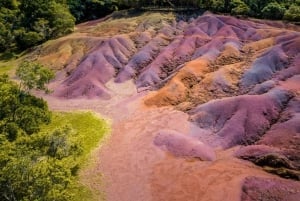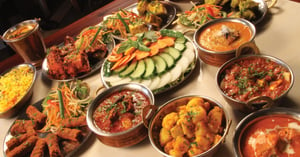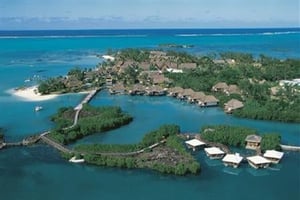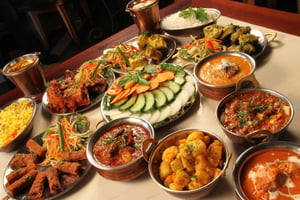Festivals in Mauritius
People from all the different religions are very pious and celebrate their festivals with much devotion and fervor
Mauritius is a land of different cultures and religions, thus there are a number of different festivals which are celebrated all year round. These traditional and religious festivals speak volumes of the rich cultural diversity of Mauritius. If you have the chance to attend any of the festivals while being on the island, don’t miss this opportunity to experience the traditions as a local. You will be cordially invited to join the celebrations, which is a great chance to know more about their beliefs.
The main religions practiced in Mauritius are Hinduism, Christianity, Islam and Buddhism. People from all the different religions are very pious and celebrate their festivals with much devotion and fervor.
The main religious celebrations and festivals celebrated on the island are Sankranti, Cavadee, Chinese Spring Festival, Maha Shivratree, Mauritius National Day, Holi, Easter, Ougadi, Eid-ul- Fitr, Ganesh Chathurti, Pere Laval Pilgrimage, Divali, All Saints Day, Ganga Asnan, and Christmas. Most of them are public holidays.
Sankrati (Jan) – It is the first religious festival celebrated, at the beginning of the year. It refers to both a specific solar day in the Hindu calendar and a Hindu festival in reverence to ‘deity Surya’ (sun). On that day, the Sun enters the sphere of Capricorn zodiac known as Makar. Further the term ‘Sankranti’ signifies the movement of the Sun from one zodiac sign into another. Thus, the auspicious day is named as Makar Sankranti. While most Hindu festivals are set by the lunar cycle of the lunisolar Hindu calendar, Sankranti is one of the few ancient Hindu festivals which is observed according to solar cycles. Thus, it almost always falls on the same Gregorian date every year (January 14), except in rare years when the date shifts by a day for that year, because of the complexity of earth-sun relative movement. The festivities associated with Makar Sankranti are known by various names, this day is also celebrated by the Tamil but under the name of Thai Pongal. The Hindus fast on this day and put on brand new clothes to mark the beginning of a new auspicious period.
Yaum Un Nabi (Jan) (Not a public holiday) – This festival is the traditional commemoration of the birth of Prophet Muhammad. It is celebrated every 12 lunations by fasting, religious singing, family and other social gatherings, decoration of streets and homes.
Thaipoosam Cavadee (Jan/Feb) (Public holiday) - It is a festival celebrated by the Tamil community of Mauritius on the full moon in the Tamil month of Thai usually between January and February in the Gregorian calendar. lt is celebrated in honour of Lord Muruga, the elder son of Lord Shiva for his victory against the forces of evil. It is one of the most impressive festivals in Mauritius in terms of fervor, devotion and visually with all the wonderful and vibrant colours. Devotees believe that all those who will carry the Cavadee to the temple on the day of the festival will have their wishes granted. Others do so to thank Lord Muruga for His Goodness, a good opportunity to thank him for the granted favours as well as to have the benefit of being closer to Him, to His wisdom and kindness. As an ultimate means of sacrifice, devotees pierce their tongues, cheeks & body with needles, hooks and skewers and carry the 'cavadee' made of bamboo, decorated with flowers and perfumed leaves to the temple with. A ten-day fasting is rigorously observed before the procession. During the year there are other Cavadee celebrations which take place but on a smaller scale. Other tamil ceremonies which take place during the year are fire-walking and sword-climbing rituals which are quite spectacular.
Chinese Spring Festival (Jan-Feb) (Public holiday) - This festival is also known as the Chinese New Year, and is celebrated by Mauritians of Chinese origin every year during the month of either January or February at the turn of the traditional lunisolar Chinese calendar. It does not fall on the same day every year because of lunar adjustment to solar days. During the week before New Year's Day there is a thorough cleaning of the home. Cakes made of rice flour and honey, called wax cakes because of their texture, are prepared and shared with relatives and friends. The dominant color on the day of the festival is red which is the symbol of happiness. As part of the celebrations there is explosion of firecrackers, according to tradition this drives away the evil spirits. Children are usually eager for the festival as they receive a little red envelope from the elders containing money known as Foong Paow. Families get together and celebrate the New Year with an abundance of food. Food is displayed in an honoured place in the home in the hope of abundance in the coming year. The festival celebrations include parades with figures of dancing dragons, lions and fireworks show. The main celebrations are held on that day in Port Louis in China town with Chinese Dragons, lion dances and fireworks.
Maha Shivaratri (February) (Public holiday) - It is a Hindu festival celebrated annually in honour of the Lord Shiva. Maha Shivaratri literally means "The Great Night of Shiva". About one week prior to the day of the festival, devotees dressed in white clothes set on for pilgrimage from all over the island to 'Grand Bassin' (Ganga Talao) to fetch holy water from the lake which is sacred for the Hindus. Most of the pilgrims carry a 'Kanwars' - wooden arches decorated with flowers. Devotees pray in the temples at Grand Bassin and burn incense sticks as part of their prayers to the Lord and collect the holy water to bring home. The holy water is ritually poured over the statue of Shiva on the day of the festival. It is a re-enactment of the day when Lord Shiva drank poison from the oceans to spare mankind, the poison was so deadly, that if any had entered Lord Shiva’s stomach – which represents the universe – the world would have been destroyed. He held it in his throat, which then turned dark blue. Maha Shivaratri is thus a day where Hindus acknowledge their thanks to Lord Shiva for protecting the world from this poison. Prayers are offered all night long on the day of the festival till dawn on the next day in temples (Shivala), thus the name "The Great Night of Shiva".
Mauritius National Holiday (Public holiday) - March 12th marks the Mauritius National Holiday. Mauritians celebrate the day with great fervor to remember the independence of the country obtained in 1968. Celebrations usually take place at Champ de Mars, Port Louis.
Holi (Mar) (Not a public holiday) – It is also known as the "festival of colours" and signifies the victory of good over evil. Holi celebrations start on the night before Holi with a Holika Dahan where people gather and perform religious rituals in front of a bonfire. They pray that their internal evil be destroyed the way Holika, the sister of the demon king Hiranyakashipu, was killed in the fire. The next day is the day of the festival itself where people visit family and friends to throw coloured powders on each other, laugh and share good times. Water guns and water-filled balloons are also used to play and colour each other. A very cheerful and outdoor festival between families, friends and neighbours. The scene of splashing colors and water on each other reflects how people here live in diversity and rejoice. Now groups also carry drums and other musical instruments and go from place to place, singing and dancing and splashing colours.
Ugadi (Mar) (Public holiday) - This festival celebrates the New Year of the Telegu – an Indian ethnic group in Mauritius – It is characterised by the preparation of elaborate family meals, cultural shows and prayers. Front doors are decorated with Rangoli (It is an art, which originates from Indian where patterns are created on the floor in living rooms or courtyards using materials such as colored rice, dry flour, colored sand or flower petals) and mango leaves. Pachadi is a dish specially prepared for the festival. It is made of new jaggery, raw mango pieces, neem flowers, salt and tamarind which reflect life - a combination of six different tastes sweet, sour, spice, salt, tanginess and bitter. Each flavour stands for some feeling or emotion which is natural in life.
Varusha Pirappu (Apr) (Not a public holiday) – This auspicious occasion is also known as Puthandu and marks the Tamil New Year’s Day and is celebrated in the beginning of Chithirai - the first month in the Tamil Calendar year. It falls on the 13th or 14th April every year according to the Gregorian calendar.
Eid-Ul-Fitr (Jun/Jul) (Public holiday) – It is an important religious day celebrated by Muslims that marks the end of Ramadan, the Islamic holy month of fasting. People attend prayers at the mosques during the day. Everyone is dressed in fine clothing and children receive gifts on that occasion. Food and cakes are shared. The traditional foods prepared on the day are beef biryani and vermicelli. As part of the celebrations, people also make donation to the poor.
Raksha Bandhan (Aug) (Not a public holiday) – The Hindu festival of Raksha Bandhan, also known as Rakhi, is a Hindu festival celebrating the bond between siblings. Sisters tie small bracelets to their brother’s wrists and receive a gift from them in return.
Assumption of the Blessed Virgin Mary (Aug) (Public holiday) - celebrating the ascension of Virgin Mary to Heaven. The Catholic Church celebrates the bodily taking up of the Virgin Mary into Heaven at the end of her earthly life.
Ganesh Chaturthi (Aug/Sep) (Public holiday) - Ganesh Chaturthi is celebrated on the 4th day of the lunar month as the birth anniversary of the younger son of Shiva, Ganesh, the God of wisdom, prosperity and good fortune and remover of all obstacles. On the day of the festival you’ll come across processions of devotees happily dancing and chanting on the roads with colourful effigies of Lord Ganesh on small platforms being carried with great enthusiasm towards the sea or river. The sound of drums, cymbals and bells fills the air. The effigies which are made of clay will be gently immersed into the water.
Blessed Jacques-Désiré Laval (Sep) (Not a public holiday) – People of all faiths gather at the shrine of Blessed Jacques Desire Laval in Sainte Croix, Port Louis on the 9th of September which is the anniversary of his death (1864). Pilgrims walk all their way to his shrine to seek his blessings on that day. During the whole month of September, the site of the shrine of Father Jacques Désiré Laval is visited by a large number people of different religious beliefs who come to ask to ask for his blessings. He is believed to have unique miraculous powers to cure the people who are ill. He was a French Roman Catholic priest who after graduating as a doctor, decided to become a priest. He arrived in Mauritius in 1841 as a missionary and helped thousands of freed slaves who later converted to Catholicism. He is known as the "Apostle of Mauritius" due to his tireless work in helping the poor and ill. He also educated people, most of thom were former slaves. His skills in medicine made him a distinguished figure in the region since his expertise allowed him to help and cure those who suffered from illnesses and epidemics which arose at that time. He was beatified in 1979 during the visit Pope John Paul II.
Divali (Oct/Nov) (Public holiday) - The festival of lights popular in India is also celebrated on the island by Mauritians of hindu faith. It marks the return of Rama after his victory over Ravana, also regarded as the victory of light over darkness, of righteousness over evil and also commemorates the destruction of the demon Narakasuran by Lord Krishna. Diwali preparations start well before the day of the festival by a thorough cleaning of the house, and buying new clothes to wear for this special occasion. Early in the morning on the day of the festival people start preparing the traditional Diwali sweets which they will share with friends, neighbours and relatives regardless of religion. They then decorate their homes with strings of lights, similar to Christmas lights. At night clay oil lamps and/or small electric colourful bulbs are lighted outside the houses, which give their homes a grand glittering look. Mauritius looks like a fairyland with all the lights. Families pray together, at home or at the temple, to the goddess of wealth and prosperity, Lakshmi. The best part of Diwali is the sharing of delicious homemade sweets and lighting firecrackers at night.
All Saints' Day (Nov) (Public holiday) – It is a Christian festival celebrated in honour of all the saints, known and unknown. It is celebrated on 1 November by the Roman Catholic Church. In Mauritius it is the day on which Mauritian (mainly the Catholics) pay tribute to their lost families or friends by laying flowers on their graves and/or praying for their souls at church.
Ganga Asnan (Nov) (Not a public holiday) - Ganga Asnan is a Hindu festival in honour of Deity Ganga. On that day many persons gather by the sea with coconuts, camphor and flowers as an offering to the goddess Ganga. Some take the opportunity to take a purifying bath while others share a family meal by the seaside.
So beaches like Belle Mare, Blue Bay, Albion, Flic and Flac, Pereybere, Tamarin and Mont Choisy are usually crowded with devotees on that day.





